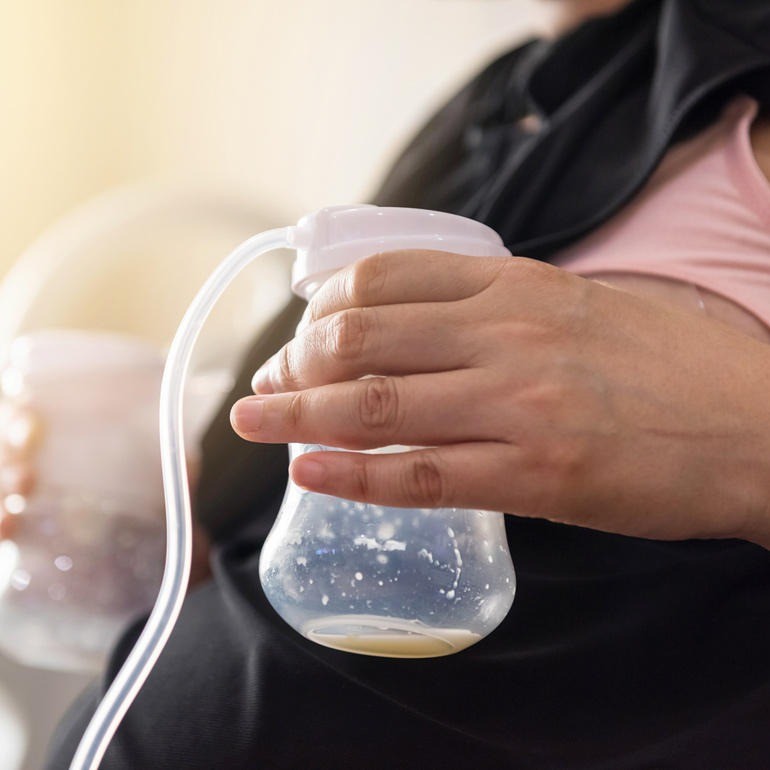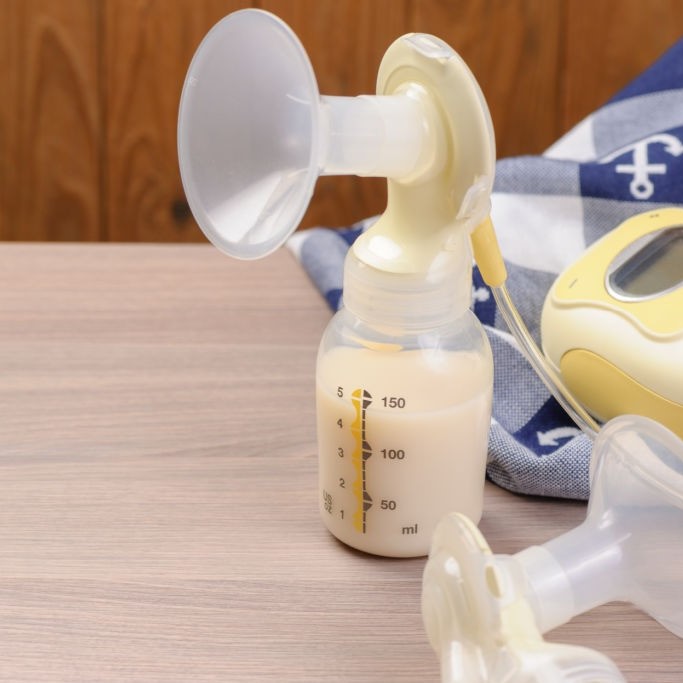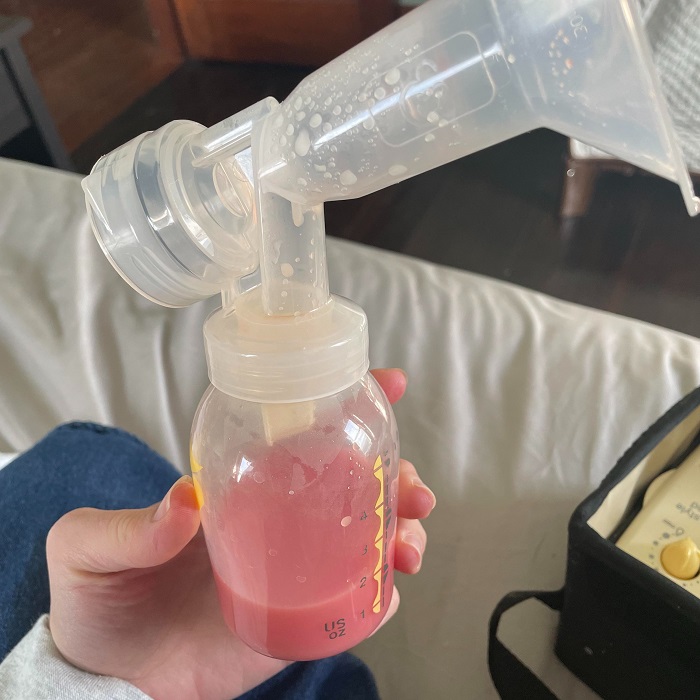What Causes Blood in Breast Milk?
Discovering blood in breast milk can be alarming. It’s vital to understand the potential causes. This helps in addressing the issue effectively.
Common Reasons for Blood Appearance
Several factors can cause the presence of blood in breast milk. These include:
- Damaged Nipples: Cracks or sores on the nipples can bleed into the milk.
- Engorgement: Overfilled breasts may lead to capillaries breaking, causing blood to leak.
- Infection: Mastitis or other infections can result in bloody discharge.
- Pumping Technique: Incorrect use of breast pumps can cause nipple injury and bleeding.
- Recent Delivery: Residual blood from delivery may mix with the milk initially.
For most cases, the issue is temporary and resolves on its own.
Health Conditions Leading to Bloody Milk
In rare instances, more serious health conditions could be the cause. If you notice persistent blood in your breast milk, consider the following:
- Intraductal Papilloma: A benign tumor in a milk duct.
- Vasospasm: Blood vessel constriction can cause nipple blanching and bleeding.
- Ductal Carcinoma: Although rare, breast cancer can lead to bloody discharge.
If you’re experiencing blood in breast milk, keep a close watch on the situation. Bring any concerning signs to your healthcare provider’s attention.
Identification of Blood in Breast Milk

Discovering blood in breast milk can be worrisome for any mother. It’s essential to identify the presence of blood accurately and to understand what you’re seeing.
Visual Indicators
Spotting blood in breast milk can happen in a few ways. You may notice:
- Pinkish or rusty-colored milk which could suggest blood mixing with milk.
- Small streaks or clots which typically stand out in the white milk.
- Discolored milk after pumping, this may indicate blood from nipple trauma.
Remember, any change in the color or texture of breast milk deserves attention.
When to Consult a Healthcare Provider
It’s crucial to know when to seek medical advice. Reach out to a healthcare provider if you observe:
- Continued presence of blood over several days.
- Pain or discomfort that doesn’t resolve, especially if it’s severe.
- Symptoms of infection, such as fever, chills, or a feeling of malaise.
- Concerning changes in breast or nipple appearance, aside from the presence of blood.
A healthcare professional can offer guidance, diagnose underlying issues, and provide treatment if needed. Always err on the side of caution when it comes to health during breastfeeding.
The Impact of Blood in Breast Milk on Babies
Is It Safe for Babies to Consume?
Many mothers worry about the safety of blood in breast milk for babies. Generally, a small amount of blood poses no risk. The stomach acid of babies can break down the blood without harm. Yet, infection risks should be ruled out by a healthcare provider.
Mothers should monitor for any allergic reactions or digestive issues in their babies. If babies appear uneasy or have changes in bowel movements, consult a doctor. Most often, babies show no adverse effects from consuming milk with traces of blood.
Understanding Baby’s Reaction
A baby’s reaction to breast milk with blood can vary. Some may refuse the milk due to a change in taste. Others might not react at all and continue to feed as normal.
Watch for signs of discomfort or distress during feeds. Look for rash, fussiness, or spitting up more than usual. These could signal a sensitivity to the blood-tinted milk. If such symptoms occur, it’s essential to get medical advice.
In conclusion, while the presence of blood in breast milk is concerning, it is usually safe for babies. Understanding their reactions can help in managing the situation. Always stay observant and seek professional help if you have concerns.
Managing and Treating Blood in Breast Milk
Finding blood in breast milk can be unsettling. Thankfully, there are ways to manage and treat the issue effectively.
Home Remedies and Precautions
When dealing with blood in breast milk, gentle home remedies and precautions can often help.
- Nipple Care: Apply pure lanolin to heal cracked nipples. Avoid harsh soaps.
- Pumping Adjustment: Use breast pumps with care. Opt for lower suction settings.
- Warm Compresses: Before nursing, apply a warm cloth to ease milk flow.
- Hydration: Drink plenty of fluids to prevent engorgement and maintain overall health.
If these steps don’t help or blood persists, it’s time to consider professional advice.
Medical Interventions for Severe Cases
In severe cases where home remedies aren’t enough, medical intervention may be necessary.
- Doctor’s Visit: See a healthcare provider to diagnose the cause of bleeding.
- Medication: In case of infection such as mastitis, antibiotics might be prescribed.
- Surgery: Very rarely, removal of benign growths might be required if diagnosed.
Follow your doctor’s instructions closely and keep monitoring the situation. It’s essential to address any serious condition that might be causing blood in your breast milk.
Preventative Measures for Blood in Breast Milk

To avoid the occurrence of blood in breast milk, prevention is key. With the right measures, nursing mothers can significantly reduce the risk of blood mixing with their milk.
Best Practices for Breast Care
Proper breast care is crucial for preventing blood in breast milk. Here are some best practices:
- Gentle Handling: Treat your breasts carefully, avoiding rough treatment during feeds and pump sessions.
- Cleanliness: Keep the nipple area clean and dry to prevent cracks and infections.
- Proper Latch: Ensure that your baby latches correctly to avoid nipple damage.
- Breastfeeding Bras: Wear well-fitting bras that support without constricting.
- Regular Checks: Routinely inspect your breasts for any signs of damage or infection.
Adopting these practices can help in maintaining the integrity of the breast tissue and lactation process.
Lifestyle Adjustments for Nursing Mothers
Lifestyle changes can also play a significant role in preventing blood in breast milk. Consider the following adjustments:
- Balanced Diet: Eat a nutritious diet that supports your body’s healing processes.
- Adequate Rest: Ensure you get enough rest to aid recovery and maintain a healthy milk supply.
- Stress Management: Engage in relaxation techniques to reduce stress that can affect breast health.
- Avoid Harmful Substances: Stay away from smoking, excessive caffeine, and alcohol.
- Breastfeed Regularly: Empty breasts often to prevent engorgement and the associated risks.
These proactive steps can help nursing mothers foster a safer and healthier breastfeeding journey.
Coping Mechanisms for Emotional Distress
Dealing with blood in breast milk can be distressing. It’s important to find healthy ways to cope.
Support Groups and Counseling
Finding a support group can offer comfort and advice. It connects you with others facing similar issues. Counseling can also help. A professional can guide you through emotions and offer strategies for coping.
Communication with Family and Healthcare Professionals
Open communication is crucial. Talk to family members about your worries. They can provide support and help share the load. Keep in touch with healthcare providers, too. They can reassure you about your baby’s safety and health.
When to Resume Breastfeeding

Returning to normal breastfeeding after finding blood in breast milk is a concern for many mothers. Knowing when it’s safe to resume is essential to ensure the well-being of both the mother and the baby.
Guidelines for Returning to Normal Feeding
Mothers can typically return to breastfeeding as soon as they feel comfortable. Here are a few guidelines:
- Heal First: Wait for nipple damage to heal to prevent further injury.
- Clearance from Health Provider: Get a go-ahead from your healthcare provider after addressing any underlying issues.
- No Blood Visible: Resume regular feeding when blood is no longer visible in the milk.
- Baby’s Readiness: Make sure your baby is willing to feed without any signs of distress.
These guidelines help ensure that breastfeeding is safe to continue without causing harm.
Monitoring Baby’s Health Post-Incident
Keep a close watch on your baby’s health after an incident involving blood in breast milk. Watch for:
- Digestive Changes: Look for unusual bowel movements or spitting up.
- Allergic Reactions: Be alert for rashes or increased fussiness after feeding.
- Feeding Patterns: Notice if your baby’s feeding patterns change significantly.
Monitoring these signs helps catch possible issues early. In case of any concerns, consult your healthcare provider immediately.